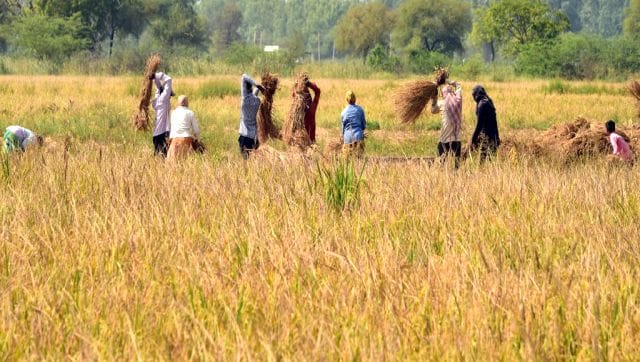Is India seeing an early summer?

Get your air conditioners ready, pack up the woolies, as India is welcoming a hot, hot summer. This is surprising for India, as not even a month ago half of the country was reeling under a cold wave.
The month of February has already seen a drastic rise in temperatures, with some parts of the country already running ahead of the curve as far as the onset of summer is concerned. And, if you think that this rise in temperatures is temporary, brace yourself as an even hotter March is a foregone conclusion.
The India Meteorological Department (IMD) has already issued its first heatwave alert for the Konkan and Kutch regions and relief is only expected by the middle of the week. Incidentally, this alert comes much earlier than usual, as heatwave alerts usually begin in March, and may suggest that India could skip the spring season entirely and enter directly into summer.
We take a look at just how hot it is across the country and what could be the repercussions of an early summer.
Maharashtra bakes
The meteorological department has issued a heatwave alert for the Raigad and Ratnagiri districts of coastal Maharashtra on Monday and Tuesday.
In a statement, the weather department said, “Maharashtra and parts of Gujarat will come under the influence of dry and hot anti-cyclonic winds blowing in from northern and northwestern India regions. This will affect the local weather and lead to a spike in the maximum temperatures, especially over Konkan-Goa and some pockets of Gujarat for another two days.”
Ratnagiri, on the western coast has already been burning up for the past one week; the maximum temperatures have been ranging between 37 degrees Celsius and 40 degrees Celsius.
Mumbai, the financial capital of India, too is witnessing sizzling heat. On Sunday the maximum temperature recorded by IMD Santacruz observatory was 36.5 degrees Celsius, which was six degrees above normal. IMD Colaba also recorded a maximum temperature of 34.2 degrees C which was four degrees more than the normal.
IMD scientist KS Hosalikar reacting to the weather, tweeted that such weather would continue for the next two days and asked people to avoid stepping out between 11 am and 2 pm when the heat is at its maximum.
Delhi feels the heat
After seeing the most cold days since 1992, Delhi is feeling the heat. On Sunday, the mercury rose to 31.5 degrees Celsius, seven degrees above normal. The Indian Express reported that between 1981 and 2010, the maximum temperature in the capital of India between 15 February and 19 February has been around 24.2 degrees Celsius.
The weatherman has predicted that this trend will continue and is likely to rise up to 33 degrees Celsius in the coming days, much before the spring festival of Holi in early March.
An official was quoted as saying, “There has been no rainfall activity in and around Delhi for the past several days. High temperatures are being reported in most parts of northwest and west India at present. In the coming days, a western disturbance is expected to bring rain to Jammu and Kashmir and Himachal Pradesh, but it is not strong enough to bring rain to Delhi. After Wednesday, the temperatures may see a slight decrease but day temperatures will still be above normal.”
Gujarat ki ‘garmi’
The western state of Gujarat has also been singed by the unexpected February heat. On 16 February, the temperature in Bhuj rose to 40.3 degrees Celsius — a new monthly record. Moneycontrol also reported that Kandla, which is 70 km from Bhuj, also recorded a monthly record — witnessing the mercury rise to 38.1 degrees Celsius.
Ahmedabad too broke history on Sunday when the temperature rose to 38.2 degree Celsius, making it the hottest February day since 1990. The previous hottest day of the month was three years ago on 24 February, when the mercury touched 37.8 degrees Celsius.
Cities like Rajkot, Surendranagar, Amreli and Keshod too saw the mercury burning on Sunday.
The hills heat up
Other states in the North are also witnessing an unexpected hot February with Punjab, Rajasthan, Uttarakhand, seeing the mercury rising. Himalayan towns recorded temperatures five-10 degrees Celsius higher than what is normal for this time of the year. At 14.4 degrees Celsius, the state capital of Himachal Pradesh, Shimla, recorded the highest-ever minimum temperature on Saturday.
Reasons for the rising heat
The main cause for the sultry weather conditions is because of weak western disturbances that haven’t brought adequate winter rain. Speaking to The Print, Mahesh Palawat, vice president of Skymet weather, said, “In the month of November and December, there were no significant western disturbances and the weather was quite dry as there was no rainfall snowfall. In January, we have seen intense snowfall because of western disturbance, but again from February, the intensity of western disturbance has reduced while the frequency has increased.”
Well-known meteorologist Navdeep Dahiya added that an anticyclone — clear skies and no rain —over India has also added to the heat woes.
Spring breaker #Heat ahead 🌡️
A very early and strong anti cyclonic circulation is dominating the atmosphere over #India has already resulted in one of the earliest 40°c maximum temperature in India, Today #Bhuj in #Gujarat recorded 40.3°c, also broke its ATR.
What’s next?
1/n pic.twitter.com/ovTeLLUite— Weatherman Navdeep Dahiya (@navdeepdahiya55) February 16, 2023
Effect of an early summer
The early onset of a summer is likely to affect the wheat yield. An official from Maharashtra’s agriculture department was quoted as telling Times of India, “This type of weather is unfavourable late-sown wheat. In general too, the tropical weather in Maharashtra is not favourable for the wheat crop.”

The Indian Agricultural Research Institute has issued a warning for wheat growers. “In the present weather condition, constant monitoring of the wheat crop against rust diseases is advised,” it stated, adding that farmers should keep crops irrigated as per requirement because of rising temperatures.
In March last year, the heat roiled wheat crops around harvest time, leading to a 2.5 per cent fall in wheat output to 106 million tonnes , even as exports kept rising due to dwindling supplies from the Russia-Ukraine region.
With inputs from agencies
Read all the Latest News, Trending News, Cricket News, Bollywood News,
India News and Entertainment News here. Follow us on Facebook, Twitter and Instagram.

Atul Tiwari is a seasoned journalist at Mumbai Times, specializing in city news, culture, and human-interest stories. With a knack for uncovering compelling narratives, Atul brings Mumbai’s vibrant spirit to life through his writing.





